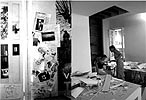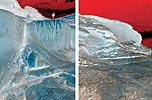 "...the rock becomes mantle. The mantle folds, the fold becomes rock. Mouldable rock, moulded rock, soft and warm. My body folds, the rock protects it. Body become rock, rock become mantle. A mantle for the body. Body and rock, under the same mantle. A mantle of water, warm and continuous, moulding the rock."
"...the rock becomes mantle. The mantle folds, the fold becomes rock. Mouldable rock, moulded rock, soft and warm. My body folds, the rock protects it. Body become rock, rock become mantle. A mantle for the body. Body and rock, under the same mantle. A mantle of water, warm and continuous, moulding the rock."
natural orography: Cabo de las Huertas, Alicante

"...la roca se vuelve manto. El manto se pliega, El pliegue se hace roca, Roca moldeable, roca moldeada, suave y cálida... mi cuerpo se pliega, la roca lo ampara. Cuerpo hecho roca y roca manto. Manto para el cuerpo. Cuerpo y roca, bajo un mismo manto. Manto de agua, cálida y continua, moldeando roca."
orografía natural: Cabo de las Huertas, Alicante.


anthropised orography: abandoned quarry, Novelda
orografía antropizada: cantera abandonada, Novelda.
artificial orography: between the folds of my coat.


"...navego entre caminos, caminos que me mecen suavemente. Texturas inventadas peinan valles cultivados. Orografías transitables invitan a perderse. Un sistema artificial que no deja de fabricar paisajes, paisajes mentales, donde crecen los sueños."
orografía artificial: entre los pliegues de mi abrigo.

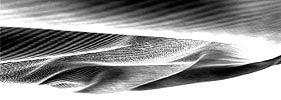
El resto de nuestros sentidos, aletargados, sólo se manifiestan en actuaciones regladas. Nuestras emociones, tan condicionadas, nos protegen de cualquier sorpresa.
...al pasear por nuestras ciudades rara vez se nos ocurre imaginar que bajo el consolidado manto urbano hubo una vez un paraje natural. Cuando casualmente nos encontramos con alguna vieja fotografía que evidencia esta insólita presencia, nos extraña descubrir la fuerte estructura natural sobre la que éstas se establecieron.
Al alejarnos de los entornos urbanos nuestra percepción cambia drásticamente. Si en la ciudad no reconocíamos el germen natural que propició en su día el asentamiento humano, en el campo son las huellas del hombre las que parecen desdibujarse. Asociamos directamente los paisajes abiertos con paisajes naturales, y se nos olvida que estos han sufrido infinidad de actuaciones humanas. No somos capaces de distinguir entre el paisaje natural y el antropizado.
...actuamos continuamente sobre nuestro entorno, transformándolo.
Hasta hace relativamente muy poco, resultábamos inofensivos en un medio que creíamos infinito. Las huellas humanas, salvo notables excepciones, no eran más que concretas intervenciones fruto de la necesidad, tratadas con amabilidad y respeto.
...el aterrazamiento de escarpadas laderas para conseguir campos cultivables, la adecuación de accidentes naturales para constituir lugares habitables, la manipulación de los ríos para hacerlos navegables, el amansamiento de pequeñas porciones de mar, son importantes actuaciones que marcan el territorio. Sin embargo, con el paso del tiempo muchas de estas antropizadas orografías han creado paisajes más ricos que los naturales. Se han introducido nuevos matices que ponen en valor el lugar, infinitas veladuras redibujan nuestro territorio, testimonio de un entendimiento, de una convivencia, de un tiempo pausado.
Deberíamos aprender del ingenio que, provocaba la falta de medios, de cómo el hombre alcanzó un equilibrio que le permitía convivir con la naturaleza y cómo lejos del monólogo actual, había establecido un diálogo con su entorno.
...la cuidadosa elección de los asentamientos, con frecuencia relacionados con algún accidente natural, les confería cierta característica propia del lugar. La lentitud en el desarrollo de las sucesivas transformaciones propiciaba diversidad de soluciones y una gran complejidad formal. La enorme experiencia en el uso de los materiales, garantizaba un digno envejecimiento.
Con el paso de los años, los factores climáticos tienden a igualar todos los componentes del paisaje, las marcas que en su día eran evidentes, poco a poco, se van borrando, y llega un momento en que ya no somos capaces de distinguirlas,... el tiempo las ha hecho lugar.
La ruina se convierte en un símbolo de reconciliación, en el que la naturaleza recupera su lugar y acoge generosamente la memoria de la intervención humana.

The rest of our senses are lulled and only stir for reglementary action. Our emotions are so conditioned that we are protected from any surprise.
...as we walk around our towns and cities it seldom occurs to us that under the settled urban mantle there was once a natural landscape. When by chance we find some old photograph that shows this unusual presence, we are surprised to discover the strong natural structure on which they were founded.
When we get away from urban environments our view changes drastically. In the city we did not recognise the natural germ that originally prompted human settlement, but in the country it is the traces of man that seem to fade. We immediately associate open landscapes with natural landscapes, forgetting that they have been subjected to an infinity of human actions. We are incapable of distinguishing between natural and anthropised landscapes.
...We are continually acting on our environment, transforming it.
Until relatively recently, we were inoffensive in a medium we believed to be infinite. The marks of mankind, barring notable exceptions, were no more than specific actions arising out of need, treated with kindliness and respect.
...terracing steep slopes to make tillable fields, adapting natural features to build habitable places, works to make rivers navigable or tame small areas of sea: all these are major interventions that mark the land. In time, however, many of these anthropised orographies have created richer landscapes than the natural ones. Nuances have been introduced that enhance the value of the place, infinite glazes that redraw our geography, bearing witness to understanding, coexistence, a slower pace.
We should learn from the inventiveness born of few resources, from how humans reached a balance that enabled them to coexist with nature and established a dialogue with their environment, rather than the present monologue.
...sites were carefully chosen, often in relation to some geographical feature, giving them a certain character specific to the place. The slow development of successive transformations favoured a diversity of solutions and considerable formal complexity. Enormous experience in the use of the materials ensured dignified ageing.
As the years pass, the weather tends to even out all the components of the landscape. The marks that were once raw slowly fade and a time comes when they can no longer be distinguished: time has turned them into place.
A ruin becomes a symbol of reconciliation: nature recovers its place and generously accommodates the memory of human intervention.
Ya no se limita a pequeñas actuaciones intencionadas sino que actúa en la totalidad del territorio. Ya no puede dar forma a esta frenética colonización y abusa de sistemas que garanticen un crecimiento isótropo e infinito. Hemos pasado de una arquitectura anónima respetuosa a una arquitectura globalizada inhumana.
¿Cuándo se va a colmatar totalmente el territorio?
¿Hay que esperar a que esto ocurra para empezar ensayar otros modelos de desarrollo que contribuyan a generar un paisaje de calidad, como el antropizado paisaje que hemos heredado de nuestros antepasados?
Cubiertas las garantías funcionales debemos adquirir compromisos formales que conciban la planificación territorial como una revisión intencionada del paisaje, y no limitarnos a colonizar el territorio mediante asépticas cajas funcionales conectadas por líneas de comunicación y energía.
Si asumimos la inevitable colonización del territorio, deberíamos comprometemos a generar orografías antropizadas o artificiales que recuperen la riqueza y la complejidad de orografías naturales primitivas.


extracto del
"manifiesto continuista"
...nos acercarnos en silencio, tratamos de escuchar,... cada lugar dicta sus propias pautas de intervención, no tenemos más que descubrirlas e interpretarlas.
Nuestra labor consiste en continuar el enriquecimiento del antropizado paisaje que heredamos de nuestros abuelos, introduciendo una visión personal del mismo que en cierta medida lo matice. No pretendemos acabar paisajes, nos preocupan los propuestas que se obstinan en cerrar definitivamente lo posibilidad de intervenir.
Apostamos por una intervención pausada que se nutra de actuaciones sutiles, permitiéndonos dialogar con los diferentes actores del paisaje, e ir poco o poco superponiendo trazas, para así mantener un paisaje vivo, cambiante, que no deje de interpretarse, que no sufra las aportaciones humanas sino que se fortalezca con cada una de sus actuaciones.

La arquitectura debería alejarse de los rígidos parámetros de lo edificación para acercarse a la orografía. Ante lo inminente falta de referencias naturales, debe proponer nuevas orografías artificiales que nos permitan fabricar verdaderos paisajes emocionales.
La naturaleza es sin duda el primer referente en lo elaboración de paisajes, pero la arquitectura, con sus complejos condicionantes, debe ir empezando o crear sus propios paisajes intencionados, sin recaer en los inhabitables modelos actuales.


El suelo es la dimensión principal y se convierte en el factor determinante en la generación del proyecto arquitectónico.
...asumimos el irremediable enraizamiento de nuestras propuestas al terreno, el soterramiento como una actitud respetuosa que facilita la implantación.
Entendemos la cubierta como una prolongación del terreno, a través de la cual se asciende hasta recobrar conciencia del paisaje, más allá de las limitadas percepciones cotidianas.
...los suelos se vuelven pared, los paredes techos, los fachadas cubiertas,... todo es continuo, todo recorrible, pisable, utilizable, manipulable...
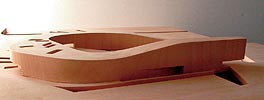
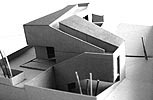
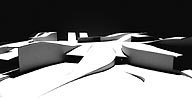

Mankind no longer confines itself to small-scale purposeful actions but acts on the totality of the land. It can no longer give shape to this frenetic colonisation as it misuses systems that guarantee infinite isotropic growth. We have moved from an anonymous, respectful architecture to an inhuman, globalised architecture.
When are we going to fill in the land entirely?
Do we have to wait for this to happen before we begin to try other models of development that will help to generate a quality landscape, like the anthropised landscape we inherited from our forebears?
Having covered the functional guarantees, we should enter into formal undertakings that see land planning as a purposeful review of the landscape, rather than confining ourselves to colonising it with aseptic functional boxes connected by communication and energy lines.
If we accept the inevitable colonisation of the land, we should commit ourselves to generating anthropised or artificial orographies that recuperate the richness and complexity of the primitive natural ones.

...we approach in silence, we try to hear ... each place dictates its own intervention guidelines, all we have to do is to discover and interpret them.
Our task is to continue to enrich the anthropised landscape we inherited from our ancestors, introducing a personal vision of it that tinges it to some degree. We do not aim to finish landscapes, we are concerned about designs that insist on definitively blocking any possibility of intervention.
We favour unhurried intervention nourished by subtle actions, allowing us to dialogue with the various actors in the landscape and slowly overlay traces in order to keep a living, changing landscape that never ceases to be interpreted, that does not suffer the human additions but is strengthened by each human action.
continuist rules based on an orographic redefinition of architecture:
Architecture must move away from rigid building parameters and get closer to the orography. Given the imminent lack of natural reference points, it must propose new artificial orographies that allow us to weave true emotional landscapes.
Nature is undoubtedly the first reference point when creating landscapes, but architecture, with its complex constraints, must begin to create its own purposeful landscapes, without falling back into the present uninhabitable models.
... a purposeful design that can make the most of the built: let us use these architectures in their every dimension! floor, wall, ceiling, front, roof ... let us exhaust every possible use!
The floor is the main dimension and becomes a determining factor in the generation of the architectural project.
...let us accept the incorrigible rootedness in the earth of our proposals, excavation as an attitude of respect that eases impact.
We see the roof as an extension of the land, through which to rise until an awareness of the landscape is regained, beyond our limited everyday perceptions.
... floors become walls, walls become ceilings, façades roofs ... everything is continuous, everything is travellable, walkable, usable, manipulable,...
1. centro cultural mina tatam/mina tatam cultural centre, Muro de Alcoy
2. nuevo centro urbano isla chica/new isla chica urban centre, Huelva
3. salamandra, centro de talasoterapia/salamandra seawater therapy centre, Gijón
4. casa rampante/rampant house, Almería
5. ordenación de/layout at Puerta Tierra, Cadiz
6. Luarca del Rio, Asturias
Proyectos/Projects: grupo aranea
Dibujos y fotografías/Drawings and photographs: francisco leiva


